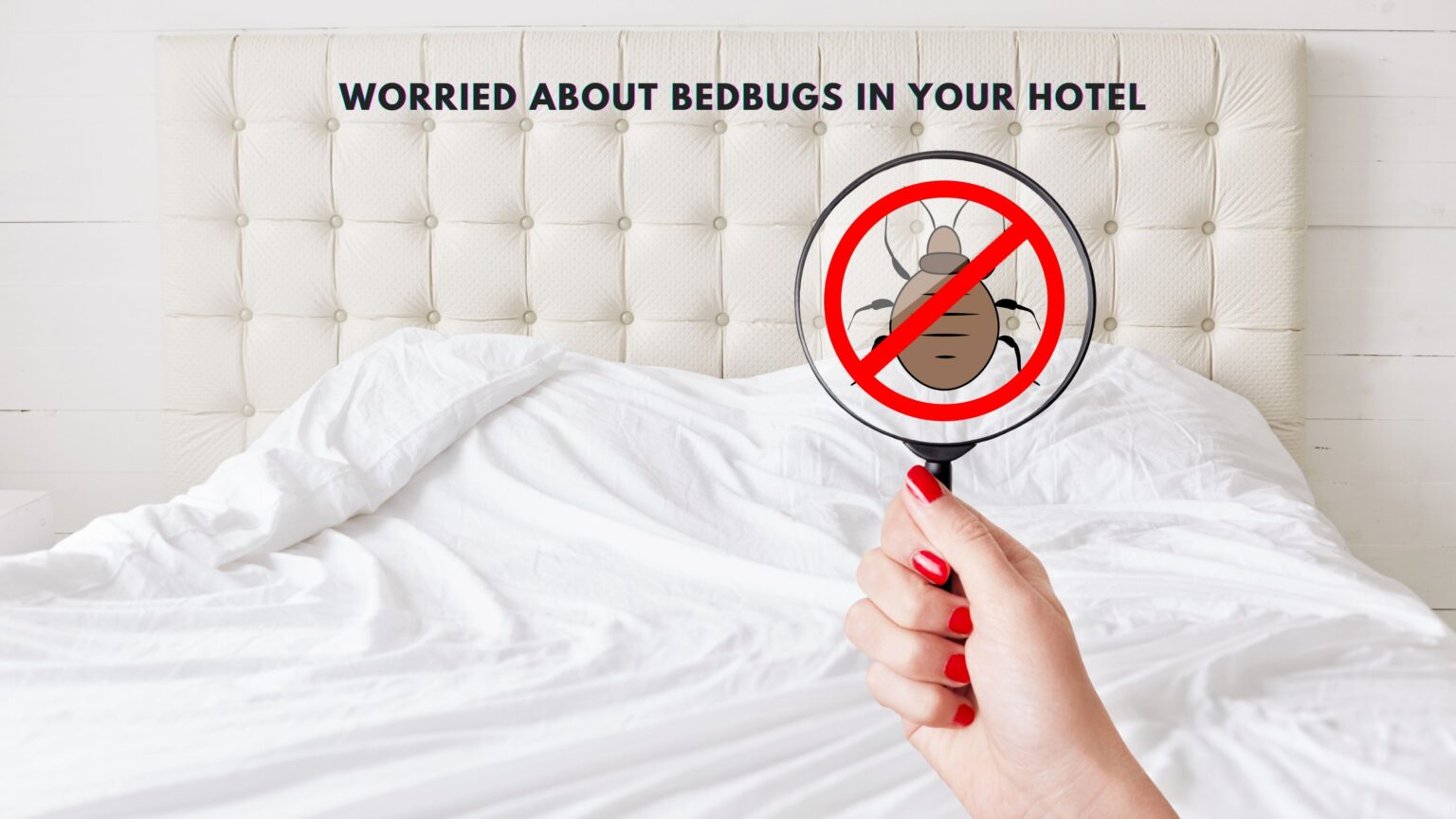The moment you swipe that hotel key card and step into your room, you’re probably thinking about where to drop your bags, whether the Wi-Fi password works, or how comfortable that bed looks after a long day of travel. But if you’re smart, you should be thinking about something far less pleasant: bedbugs.
Here’s a sobering reality check: bedbugs have been found in hotels ranging from budget motels to five-star luxury resorts. They don’t discriminate based on price point, cleanliness standards, or star ratings. These tiny vampires are expert hitchhikers who can turn your dream vacation into a nightmare of itchy welts, sleepless nights, and the very real possibility of bringing unwanted guests home in your luggage.
But before you cancel all future travel plans or resign yourself to sleeping in your car, I’m going to share a simple hack that takes less than five minutes and could save you from weeks of misery. This technique, used by seasoned travelers, hotel inspectors, and pest control professionals, will help you detect bedbugs before they detect you.
The 60-Second Hotel Room Inspection That Could Save Your Trip
The moment you enter your hotel room, before you even think about touching that bed, follow this protocol exactly:
Step 1: Leave your luggage in the bathroom or on hard surfaces near the entrance. Never place bags on beds, upholstered furniture, or carpet until you’ve completed your inspection.
Step 2: Turn on all the lights in the room, including bathroom lights and any desk lamps. Bedbugs hate bright light and will retreat to hiding spots, but you need maximum visibility for your inspection.
Step 3: Head straight to the bed and pull back the sheets at the head of the bed, focusing on the corners where the fitted sheet meets the mattress. This is bedbug ground zero—their favorite hiding spot because it’s close to their food source (you) and provides the dark, tight spaces they prefer.
Step 4: Look for these telltale signs:
- Dark or rust-colored stains (dried blood from previous victims)
- Small dark spots about the size of a period (bedbug fecal matter)
- Sweet, musty odor in heavily infested rooms
- Tiny blood smears on sheets
- Small, dark moving dots (actual live bugs)
- Reddish or rust-colored stains on sheets
Step 5: Check the headboard by pulling it away from the wall if possible, or shining your phone’s flashlight into the gap between the headboard and wall. Bedbugs often hide in these dark crevices during daylight hours.
The Advanced Inspection: Going Beyond the Obvious
If your initial bed inspection passes, don’t stop there. Experienced travelers know that bedbugs can hide in multiple locations throughout a hotel room. Spend an additional three minutes checking these secondary locations:
Upholstered Furniture: Check seams, cushions, and joints of chairs, sofas, and ottomans. Pay special attention to furniture positioned near the bed, as bedbugs typically stay within 8 feet of their feeding area.
Curtains and Drapes: Examine the folds and hems of curtains, especially where they meet the wall or window frame. The fabric provides excellent hiding spots, and curtains are often overlooked during hotel cleaning.
Picture Frames and Wall Decorations: Look behind frames hanging above or near the bed. Bedbugs love flat, protected spaces, and picture frames provide the perfect environment.
Electrical Outlets and Light Fixtures: Check outlets near the bed and inspect lamp bases and lampshades. While less common, bedbugs can hide in these locations in heavily infested rooms.
Carpet Edges: Examine the carpet along the baseboards, particularly near the bed. Look for dark spots or stains along the carpet edge where it meets the wall.
What to Do If You Find Evidence of Bedbugs
If your inspection reveals any signs of bedbugs, do not panic, but act decisively:
Immediate Action: Do not unpack anything. Do not place any items on soft surfaces. Keep your luggage in the bathroom while you handle the situation.
Document Everything: Take clear photos of any evidence you find. This documentation will be crucial for getting moved to a different room or receiving a refund if necessary.
Contact Front Desk Immediately: Report your findings to hotel management. Be specific about what you found and where. A reputable hotel will take your concerns seriously and offer immediate solutions.
Request a Room Change: Ask to be moved to a room that is not adjacent to the infested room. Bedbugs can travel between rooms through walls, electrical outlets, and plumbing, so distance matters.
Inspect the New Room: Repeat your entire inspection process in the replacement room. Don’t assume that because management moved you, the new room is automatically safe.
The Science Behind Bedbug Behavior: Why This Method Works
Understanding bedbug behavior helps explain why this inspection method is so effective. Bedbugs are nocturnal creatures that feed primarily on human blood while we sleep. They’re attracted to carbon dioxide and body heat, which is why they congregate near the head of the bed where we breathe and generate the most warmth.
During daylight hours, bedbugs retreat to dark, tight spaces as close to their feeding area as possible. They can survive for months without feeding, which means even a recently cleaned room could harbor bedbugs if the previous guests were infested.
Bedbugs are excellent hitchhikers but poor climbers on smooth surfaces. This is why keeping your luggage in the bathroom (with its hard, smooth surfaces) while you inspect provides protection. They’re much less likely to crawl across tile floors and up smooth suitcase surfaces compared to carpet and fabric.
READ ALSO: The Post-Vacation Slump Is Real—Here’s How to Snap Out of It
Prevention Strategies for the Paranoid (But Smart) Traveler
Beyond the initial inspection, seasoned travelers employ additional strategies to minimize bedbug risk:
The Luggage Quarantine Method: Keep suitcases in the bathroom throughout your stay, only removing clothing as needed. Hard bathroom surfaces are inhospitable to bedbugs, and the distance from sleeping areas reduces risk.
The Heat Treatment Hack: Upon arriving home, immediately place all clothing in the dryer on high heat for 30 minutes before washing. Heat above 120°F kills bedbugs and their eggs instantly. This method is more effective than washing alone.
The Plastic Bag Protocol: Pack dirty clothes in sealed plastic bags during travel. This prevents bedbugs from accessing your clothing and potentially hitchhiking home with you.
The Cold Storage Method: If you suspect exposure, place potentially infested items in the freezer at 0°F for at least four days. While less practical than heat treatment, freezing temperatures will kill bedbugs and eggs.
Understanding Hotel Response and Your Rights
Reputable hotels should respond immediately to bedbug reports with professionalism and urgency. Here’s what you should expect:
Immediate Room Change: Hotels should offer to move you to a different room immediately, preferably one that’s not adjacent to the reported infestation.
Professional Inspection: Quality establishments will have the reported room inspected by pest control professionals and taken out of service if necessary.
Compensation Consideration: Depending on the severity of the situation and hotel policy, you may be eligible for room rate adjustments, future stay credits, or full refunds.
Documentation: Hotels should document your report for their pest control records and follow-up procedures.
If a hotel dismisses your concerns, minimizes the issue, or refuses to address the problem adequately, consider this a red flag about their overall management standards.
The Economics of Bedbug Prevention
The cost of bedbug prevention during travel is essentially zero—it requires only time and vigilance. However, the cost of a bedbug infestation at home can be substantial:
Professional Extermination: Professional bedbug treatment typically costs between $1,000-$5,000 depending on the size of your home and severity of infestation.
Replacement Costs: Heavily infested furniture, mattresses, and clothing may need to be discarded and replaced.
Temporary Housing: Severe infestations might require temporary relocation during treatment, adding hotel and meal costs.
Medical Treatment: Bedbug bites can cause allergic reactions requiring medical attention in some individuals.
Lost Productivity: The stress, sleep disruption, and time required to manage an infestation can impact work and personal life significantly.
When viewed through this economic lens, spending five minutes inspecting each hotel room is an incredibly high-value investment in your financial and personal well-being.
Bedbug Myths That Could Cost You
Several common misconceptions about bedbugs can leave travelers vulnerable:
Myth: “Clean, expensive hotels don’t have bedbugs.” Reality: Bedbugs are found in establishments across all price ranges and cleanliness levels. They’re brought in by previous guests, not created by poor hygiene.
Myth: “You’ll feel bedbug bites immediately.” Reality: Many people don’t react to bedbug bites for days or weeks, and some people never develop visible reactions. By the time you notice bites, you may have already brought bedbugs home.
Myth: “Bedbugs only live in beds.” Reality: While beds are their preferred habitat, bedbugs can infest any upholstered furniture, carpets, curtains, and even electrical outlets near sleeping areas.
Myth: “Bedbugs are too small to see.” Reality: Adult bedbugs are about the size of an apple seed and visible to the naked eye, especially after feeding when they become engorged and darker.
Myth: “One or two bedbugs isn’t a problem.” Reality: Bedbugs reproduce rapidly, and even a few individuals can establish a significant infestation quickly. Female bedbugs can lay 1-5 eggs per day.
What to Look for in Hotel Reviews and Research
Smart travelers research bedbug history before booking. Here’s how to identify potential red flags:
Review Red Flags: Look for guest reviews mentioning bedbugs, bug bites, or pest problems. Pay attention to recent reviews, as bedbug situations can change rapidly.
Bedbug Registry Websites: Check online bedbug registries where travelers report infested hotels. While not always current, these databases can reveal patterns of recurring problems.
Hotel Response to Complaints: Read how hotels respond to negative reviews mentioning bedbugs. Professional responses that acknowledge the issue and describe remediation steps are positive signs.
Repeated Complaints: Multiple bedbug reports over time suggest systemic problems rather than isolated incidents.
Technology Tools for the Modern Bedbug Hunter
Several apps and tools can assist with bedbug detection and prevention:
Flashlight Apps: Your smartphone’s flashlight is your most important inspection tool. Download a bright flashlight app if your phone’s built-in light isn’t sufficient.
Bedbug Registry Apps: Mobile apps that crowd-source bedbug reports from travelers can help you check hotels before booking or upon arrival.
Magnification Apps: Phone apps that use your camera as a magnifying glass can help identify small bedbug signs that might be missed by the naked eye.
Travel Safety Apps: Some comprehensive travel safety apps include bedbug reporting and checking features alongside other travel safety tools.
The Global Bedbug Situation: Regional Considerations
Bedbug prevalence varies by region, but no area is immune:
North America: Major cities like New York, Los Angeles, and Chicago consistently rank high in bedbug activity. Business hotels in urban areas see frequent turnover that can spread infestations rapidly.
Europe: Popular tourist destinations like Paris, London, and Amsterdam report regular bedbug issues in accommodations across all price ranges.
Asia: Rapid tourism growth in cities like Bangkok, Tokyo, and Singapore has coincided with increased bedbug reports in regional hotels.
Developing Regions: Areas with less stringent pest control regulations may have higher baseline bedbug populations, making prevention even more critical.
Regardless of destination, maintain the same vigilance level and inspection protocols wherever you travel.
Building Bedbug Awareness Into Your Travel Routine
The key to effective bedbug prevention is making inspection a non-negotiable part of your hotel arrival routine, just like checking Wi-Fi passwords or locating emergency exits. This systematic approach ensures you never skip this crucial step, even when tired from long travel days.
Create a mental checklist that starts the moment you enter any accommodation:
- Luggage stays in bathroom
- Lights on everywhere
- Bed inspection first
- Secondary area checks
- Only then unpack and settle in
This routine becomes second nature after just a few trips and provides peace of mind that allows you to truly relax and enjoy your travels.
The Long-Term Impact of Bedbug Vigilance
Travelers who consistently practice bedbug prevention report several long-term benefits beyond avoiding infestations:
Increased Travel Confidence: Knowing you have a systematic approach to bedbug prevention reduces anxiety about accommodation choices and allows for more spontaneous travel decisions.
Enhanced Observation Skills: Regular practice of detailed room inspections improves your overall awareness of accommodation quality, safety issues, and cleanliness standards.
Better Hotel Selection: Experience with bedbug detection often correlates with better overall judgment about accommodation quality and value.
Reduced Travel Insurance Claims: Avoiding bedbug-related trip disruptions and home treatment costs protects your travel insurance history and rates.
The five minutes you spend inspecting each hotel room is a small investment that pays dividends in travel safety, peace of mind, and financial protection. In a world where bedbugs are an unfortunate reality of modern travel, knowledge and vigilance are your best defenses.
Your future self—the one sleeping peacefully in bedbug-free beds and returning home without unwanted hitchhikers—will thank you for making this simple inspection ritual a non-negotiable part of every hotel stay. Because when it comes to bedbugs, prevention isn’t just better than cure—it’s infinitely easier, cheaper, and less traumatic than dealing with an infestation after the fact.
In another related article, I Travel 120+ Days Per Year—These Are the Rules Everyone Should Follow to Avoid Overpacking







